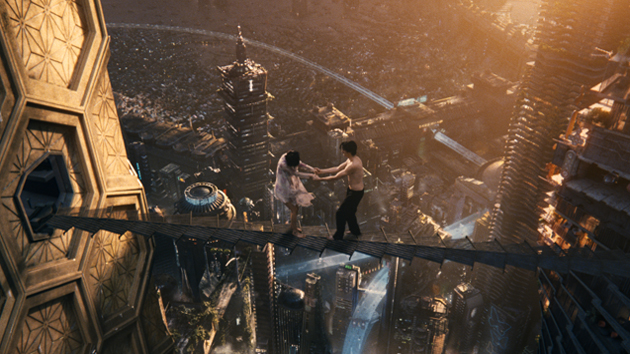Method Los Angeles, Vancouver and London Complete 398 Shots for New Film; ILM, Scanline and Others Finesse the Rest
David Mitchell, author of Cloud Atlas, never dreamed his sweeping, time-, identity- and gender-shifting novel in six interlaced stories would make it onto the screen. “It’s a shame this is unfilmable," he has admitted thinking while writing it. "This will never happen. Dream on.”
Bring in the unpredictable and Matrix franchise-making Wachowskis, one of whom was in the midst of a life-changing journey of their own, add German director Tom Tykwer (Run Lola Run, Perfume), and never say never again.
After being transported both by Mitchell's message of interconnected human actions and undulating light-years forward, centuries back framing device, co-directors Lana Wachowski, Andy Wachowski and Tykwer eventually got the author to sign off on a more linear narrative on which to hang their adaptation. They then began assembling the A-list cast and visual effects arsenal to bring that unfilmable and multi-layered vision to life.
Enter Method Studios, the primary VFX team on the Warner Bros. project, which pulled all three of its core facilities in L.A., Vancouver and London—plus 11 outside VFX vendors that included ILM and Scanline—to complete the project. Method alone worked on a total of 398 shots for Cloud Atlas and was involved in concepting the film's look from the very beginning. Lead visual effects supervisors Dan Glass, Method's chief creative office and Stephane Ceretti, hailing from Method's London office, directed the geo-dispersed team. “We made the most of Method’s international network and shared shots across our three locations which were split up by key sequences," said Ceretti. "Method Studios in London contributed concept design work for the movie's art department as well as finished matte paintings for several environments including the ‘destroyed city’ scenes within the film. The Los Angeles and Vancouver locations created numerous environmental sequences, and their CG models and motion graphics assets were shared internally and also passed on to other vendors such as ILM and Scanline.”
Method’s Los Angeles team cooked up fight and escape sequences, the all-CG establishing shots of Neo Seoul, and a number of CG vehicles and digital facial retouching on characters who changed ethnicities throughout the film. The Vancouver group built on those futuristic establishing shots with more than 100 3D models that gave rise to the architecture of Neo Seoul that looms in multiple shots with a variety of POVs (showcased after the three minute mark in the video below). “This was a hugely intricate film and our Method crews created beautiful work while collaborating seamlessly together over three countries," said Dan Glass. "The complexity of fitting the pieces of the story together went well beyond the narrative structure. It proved to be a worthy challenge for all involved and we couldn’t have pulled it off without the great talent of our own Method team and that of all our vendors across the globe.”
Whether or not you think the filmmakers' multiverse adheres to a unifying story worth telling, consider some fragments of that dream in the video Method put together to highlight the sheer scope of its work for this film.
Crafts: VFX/Animation
Sections: Creativity
Topics: Article Project/Case study Cloud Atlas fix headlines method studios Wachowskis
Did you enjoy this article? Sign up to receive the StudioDaily Fix eletter containing the latest stories, including news, videos, interviews, reviews and more.











Nice! Thanks!!!